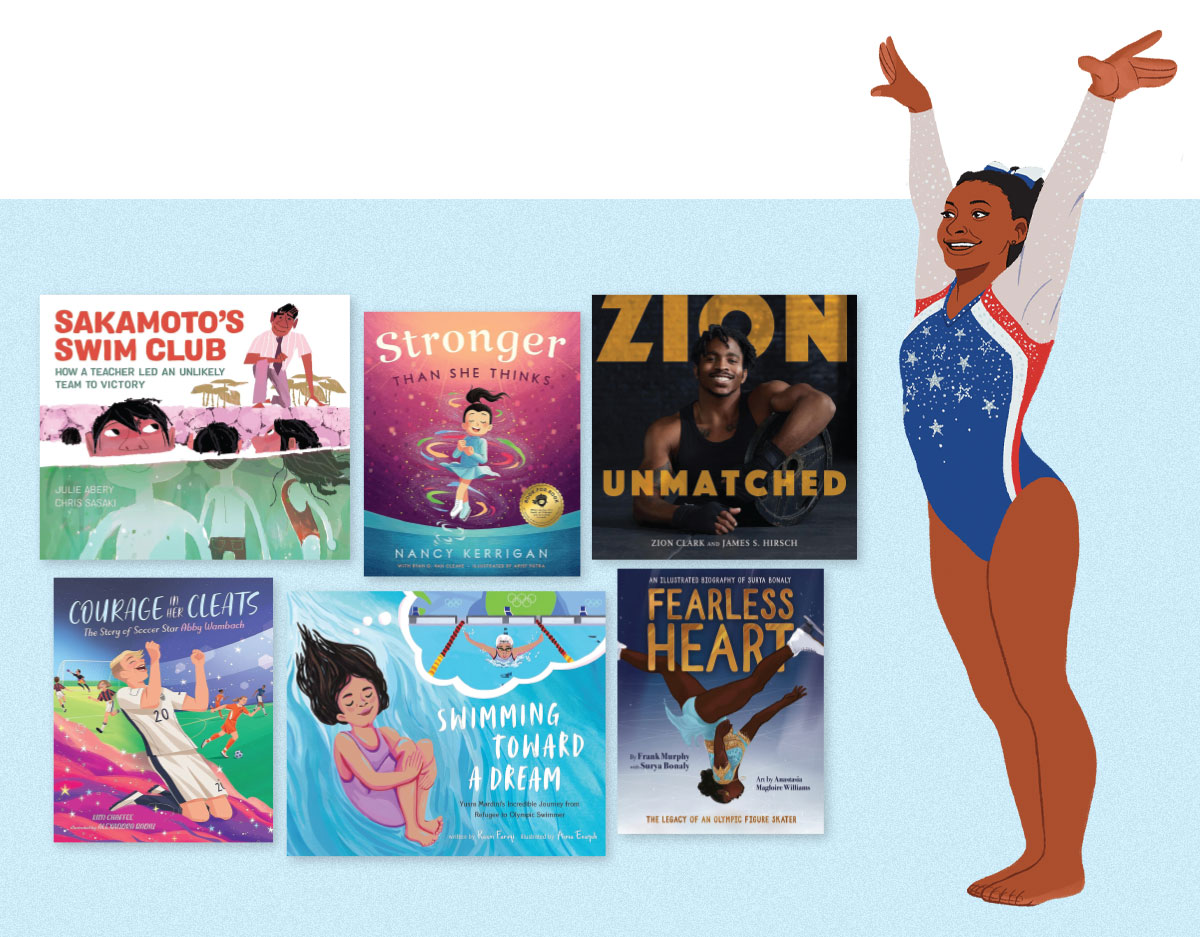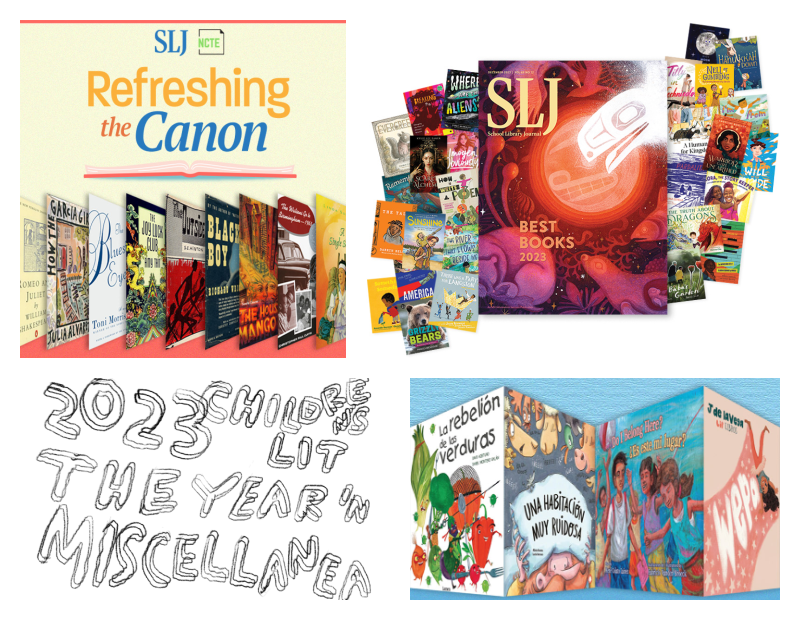It Fell From the Sky: An Interview with The Fan Brothers
Eric and Terry Fan are not, what you might call, predictable. In my experience, the picture book creators you watch with the closest eye are the ones that follow a winding path. The trajectory of their particular career has been astonishing. I know of few artists that can pivot between topiary, pirates, scarecrows, science fiction experiments, and heartfelt odes to grandparents with such neat hairpin turns. And now, in this year of 2021, they have a new picture book out called IT FELL FROM THE SKY. Rather than talk about myself, here is the official description:
From the creators of the critically acclaimed The Night Gardener and Ocean Meets Sky comes a whimsical and elegantly illustrated picture book about community, art, the importance of giving back—and the wonder that fell from the sky.
It fell from the sky on a Thursday.
None of the insects know where it came from, or what it is. Some say it’s an egg. Others, a gumdrop. But whatever it is, it fell near Spider’s house, so he’s convinced it belongs to him.
Spider builds a wonderous display so that insects from far and wide can come look at the marvel. Spider has their best interests at heart. So what if he has to charge a small fee? So what if the lines are long? So what if no one can even see the wonder anymore?
But what will Spider do after everyone stops showing up?
I think I can be forgiven for looking at this book and ascribing larger implications to it. 2020 absolutely felt like a year when something huge fell out of the sky and rocked our world. With that in mind, I had some questions for Eric and Terry about the book:
ADVERTISEMENT
ADVERTISEMENT
Betsy Bird: Thank you so much for speaking with me today! I guess first and foremost I’d love to know the origin story behind this book. Where precisely did it come from?

Eric and Terry Fan: Like most of our books, It Fell from the Sky started as a standalone image. This one was from about ten years ago, before we had even published any picture books. Essentially, the whole idea was present in the original drawing, which was a pen and ink sketch of some Victorian insects in top hats examining a toy marble. I think what appealed to us about the image was the humor of the insect “scientists” treating the marble with such wonder and curiosity. It seemed like a good takeoff point for a story, and we always look for a good visual springboard for our imagination before starting a book.
We decided on a marble for the object that falls from the sky because we wanted an ordinary, recognizable object that also had a certain intrinsic mystery and beauty to it. A marble is also something you could imagine a child accidentally dropping into the garden.
We both collected vintage marbles when we were younger, and were always attracted by their variety and beauty. They’re like little planets, or miniature self-contained worlds, which also suited the narrative of the story (something falling from the sky). As we collected marbles a whole new nomenclature revealed itself: latticino cores and agates, brilliantly-colored onionskins and gold-banded lutzes.


We chose a simple cat’s eye marble for the book because it seemed like the most iconic and easily recognizable. Our marble collecting actually followed a similar trajectory to the spider’s thematic path in some ways. As we learned more about them, and started coveting the rarer and more valuable marbles, some of the enjoyment began to fade. What started as a purely aesthetic journey – finding a sea glass marble washed up on the shore, or an interesting marble for ten cents in an antique store – became something else. Soon it was all about rarity and value, and that’s when we both stopped collecting; the simple joy of seeing them as humble but beautiful objects was gone.
BB: Tell me a little bit about the limited color palette. You’re working within a world that’s mostly black and white. The colors that appear are either of anything “from the sky” or they’re the green of the leaves that the spider greedily collects like dollar bills. I’ve seen you limit your colors before (The Night Gardener did it a bit) but this ups the ante. How did you make the choice?

E&TF: We’ve always been interested in doing a black and white book, and this one provided a good opportunity to explore that because we wanted a clear demarcation between the marble and the insect world. The color of the marble was to emphasize its otherworldliness, almost in a Lovecraftean sense (minus the cosmic horror). It was the idea of something being so far outside of your natural frame of reference that it seems to belong to an entirely different world or higher dimension. The green of the leaves was to connect the marble to the spider’s greed, almost like a radioactive influence spreading into the insect world. By the end of the book, that implication has been completely flipped, and the color is used to represent the spider’s generosity and how that act of sharing has impacted his community.
BB: Can you let me know a bit about what your working process looks like? What does writing and illustrating a book like IT FELL FROM THE SKY look like for you?

E&TF: Some stories are difficult to write, but It Fell from the Sky was one that literally “fell from the sky” almost complete. We wrote a first draft and created a dummy fairly quickly. Once we were happy with the dummy we began working on the final art. We share a Dropbox so we can collaborate and work on files and the other person can see those changes in something close to real time.
ADVERTISEMENT
ADVERTISEMENT
BB: Yours is not the only 2021 picture book about mysterious objects falling from the sky amongst behatted animals. Jon Klassen’s THE ROCK FROM THE SKY comes immediately to mind. The concept of something strange and unwieldy hitting you out of nowhere feels like a very pandemic/post-pandemic idea. Do you think there’s a bit of that feeling to your book at all?
E&TF: It was interesting to see that, but I’m also a strong believer in synchronicity. I love Jon Klassen’s book and I do see how it connects with current events. I feel like our two most recent books both have a bit of resonance with the pandemic: The Barnabus Project has its main character trapped inside a bell jar, isolated from the rest of the world, and in It Fell from the Sky something drops unexpectedly from nowhere, altering things dramatically and disrupting the insects’ world. I think it’s emphasized even further by the ending of the story when the child reaches down and takes the marble back and tramples the spider’s world; I think everyone feels a little “trampled” this year.
BB: Yup. I am tres trampled. Okay, final million dollar question: Can you tell me anything at all about what you’re working on next?
E&TF: We’re currently working on a new book for Simon & Schuster but I’m not sure we’re allowed to say much about it at this point, other than we’re excited about the story. Hopefully, we’ll be able to share more details soon!
BB: Hey, you can’t blame a gal for trying.
Many thanks to Beth Parker and the folks at Simon & Schuster as well as Eric and Terry themselves for speaking with me today. IT FELL FROM THE SKY is on shelves September 28th. Pre-order it from that nice independent bookseller you know today.
Filed under: Interviews
About Betsy Bird
Betsy Bird is currently the Collection Development Manager of the Evanston Public Library system and a former Materials Specialist for New York Public Library. She has served on Newbery, written for Horn Book, and has done other lovely little things that she'd love to tell you about but that she's sure you'd find more interesting to hear of in person. Her opinions are her own and do not reflect those of EPL, SLJ, or any of the other acronyms you might be able to name. Follow her on Twitter: @fuseeight.
ADVERTISEMENT
ADVERTISEMENT
SLJ Blog Network
The Moral Dilemma of THE MONSTER AT THE END OF THIS BOOK
K is in Trouble | Review
Parsing Religion in Public Schools
ADVERTISEMENT







